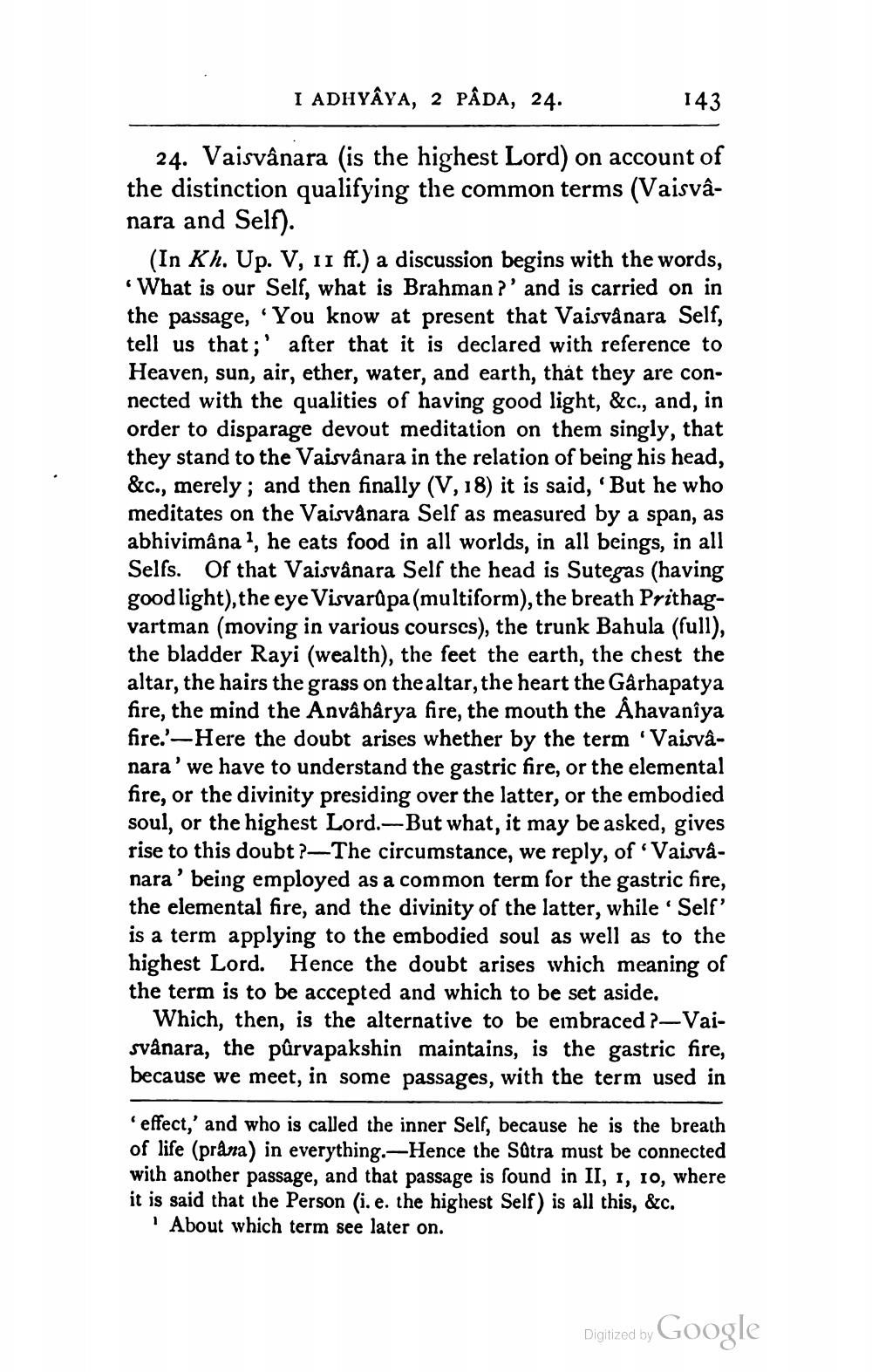________________
I ADHYAYA, 2 PÂDA, 24.
143
24. Vaisvânara (is the highest Lord) on account of the distinction qualifying the common terms (Vaisvânara and Self).
(In Kh. Up. V, 11 ff.) a discussion begins with the words, What is our Self, what is Brahman?' and is carried on in the passage, “You know at present that Vaisvånara Self, tell us that;' after that it is declared with reference to Heaven, sun, air, ether, water, and earth, that they are connected with the qualities of having good light, &c., and, in order to disparage devout meditation on them singly, that they stand to the Vaisvânara in the relation of being his head, &c., merely; and then finally (V, 18) it is said, 'But he who meditates on the Vaisvanara Self as measured by a span, as abhivimâna”, he eats food in all worlds, in all beings, in all Selfs. Of that Vaisvânara Self the head is Sutegas (having good light), the eye Visvarðpa (multiform), the breath Prithagvartman (moving in various courses), the trunk Bahula (full), the bladder Rayi (wealth), the feet the earth, the chest the altar, the hairs the grass on the altar, the heart the Garhapatya fire, the mind the Anvâhârya fire, the mouth the Ahavaniya fire.'—Here the doubt arises whether by the term 'Vaisvanara' we have to understand the gastric fire, or the elemental fire, or the divinity presiding over the latter, or the embodied soul, or the highest Lord.—But what, it may be asked, gives rise to this doubt?- The circumstance, we reply, of Vaisvanara' being employed as a common term for the gastric fire, the elemental fire, and the divinity of the latter, while. Self' is a term applying to the embodied soul as well as to the highest Lord. Hence the doubt arises which meaning of the term is to be accepted and which to be set aside.
Which, then, is the alternative to be embraced ?—Vaisvånara, the pûrvapakshin maintains, is the gastric fire, because we meet, in some passages, with the term used in
effect,' and who is called the inner Self, because he is the breath of life (prâna) in everything. Hence the Sätra must be connected with another passage, and that passage is found in II, 1, 10, where it is said that the Person (i.e. the highest Self) is all this, &c.
About which term see later on.
Digitized by
Digized by Google




